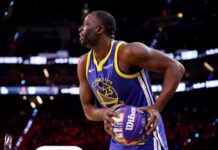A new fantasy football season is upon us, and if you tuned out after February’s Super Bowl, you certainly have a lot of catching up to do. The 2024 NFL offseason brought a flurry of action that will bring massive changes to this season’s fantasy football landscape. That action includes wholesale changes to the Atlanta Falcons’ offense, a wave of new, exciting quarterbacks led by No. 1 pick Caleb Williams, a bunch of big-name running backs finding new homes and, of course, the return of old friend Jim Harbaugh.
The Playbook takes a thorough position-by-position look at that landscape and offers advice and information that can help you make sound decisions not only on draft day, but in the weeks leading up to Week 1 and throughout the season. The focus will primarily be on average-sized, season-long leagues, but I didn’t forget those of you who, like me, are in more nuanced leagues, including dynasty, keeper, superflex, and best ball.
If you’re a regular reader of my work, first of all, thank you! Second of all, this will seem quite different. Instead of going heavy on data, numbers, and charts, this is a strategy piece for both beginners and advanced players that shows you how to apply all that you’ve learned during your many years as a fantasy player and during an offseason of research. Note that I originally published a version of this article in 2021, but it is a living document I make substantial updates to each year.
Bear with me, and I’ll cover as many bases as possible in a relatively short amount of time.
As you get ready for the fantasy season, be sure to get plenty of practice by using our Mock Draft Lobby and keep track of Mike Clay’s updated projections throughout the season.
Jump to: Early picks | State of the positions | Draft strategy | Post-draft planning | Trading | Navigating waivers | Adjusting to your league
What to do with your first two draft picks
Go with the flow, or zig when they zag? That’s the big question entering 2024 fantasy football drafts.
It has taken some time, but wide receiver has officially overtaken running back as the priority position.
That’s evidenced by ADP trends in recent seasons. Five years ago (2020), 10 of the first 12 picks (and 14 of the top 20) were running backs. That trend has shifted in recent years, and 2024 ADP data shows the considerable change: Only four of the first 12 picks (and 10 of the first 36) are RBs.
Same as last year, you should expect more WRs than RBs to be off the board right out of the gate and throughout the first few rounds of your draft.
The question is, do you follow the new trend and avoid RBs early or try to gain an edge by stacking a pair of RB1s with your first two picks? It somewhat depends on where you’re drafting in the first round, but the best way to maximize your entire lineup is going to require flexibility and quick thinking.
If you have one of the first three picks, the right answer, in my opinion, is to select one of the big three RBs: Christian McCaffrey, Breece Hall, or Bijan Robinson. Because of how quickly the position dries up of reliable, elite options, this is the best way to gain an edge. From that point on, however, wide receivers rule the day. CeeDee Lamb is your top option at wide receiver, but not far behind him are other elite, high-floor WRs, including Tyreek Hill, Ja’Marr Chase, Amon-Ra St. Brown, Justin Jefferson, and A.J. Brown.
Despite the increasing popularity of wide receivers, landing quality running backs is still a very important goal. Of course, how exactly you find those quality options remains an industry-wide debate.
Some will tell you to load up early and often, while others opine that some form of the Zero RB strategy is your ticket to a fantasy title. If you’re not familiar, Zero RB is a drafting philosophy that involves not selecting any running backs until at least the middle portion of your draft, instead loading up on wide receivers (and perhaps an elite tight end) in the first several rounds.
What do I think? I think that it depends on whom you’re drafting with and how your draft is progressing. That’s a bit of a cop-out, but it also follows suit with my general drafting strategy of never (OK, rarely) allowing biases, emotion, or need stand in the way of maximizing value.
Here’s an example of zigging when they zag by leaning into an RB-heavy approach: In the eighth annual MFL10 of Death best ball draft, held in May 2021, I knew I was drafting with some of the sharpest players in the industry and was fully aware that many of them are on the Zero RB train, which was sure to mean a heavier dose of wide receivers in the first few rounds. This allowed me to grab Alvin Kamara fifth overall, Nick Chubb 20th, D’Andre Swift 29th, Josh Jacobs 53rd, and Leonard Fournette 125th. (The first four were picked within the first five rounds.) I picked all five backs later (some way later) than their average draft position (ADP) at the time, so while I was a step behind at receiver, I built myself a sizable edge at running back and had a weekly edge in the flex.
I rolled with a similar strategy the year prior (four RBs in the first seven rounds) and spent two of my first three picks on RBs in both 2022 (not to mention taking the discount on Josh Jacobs in the sixth round) and 2023. Did it work? Well, prepare yourself for the first of several not-so-humble brags in this piece: I won the league in both 2020 and 2022, and, despite almost no production from my injury-plagued receiver room in 2021 and almost zero from my quarterbacks last year, I finished in the top four both seasons. You won’t be shocked to learn that I spent four of my first six picks on running backs in the 2024 version of this league (Breece Hall, Saquon Barkley, Isiah Pacheco, Rachaad White).
That’s an example of zigging when they zag, but if your league hasn’t quite caught on to the new trend and still hammers away at RBs early on, flipping to a WR-heavy approach can pay off.
As for choosing where to draft (if you get the choice), I’m generally a proponent of aiming for the earliest possible pick, and that applies in 2024. I can land an elite back with my first pick and still land another midrange RB1 or a pair of star WRs at the Round 2/3 turn. That list of players includes Kyren Williams, Deebo Samuel Sr., Jaylen Waddle, Brandon Aiyuk, Derrick Henry, Michael Pittman Jr., and Mike Evans.
I’ll get more into the weeds on draft strategy throughout this piece, but here’s the bottom line: In an ideal world (and considering the current ADP trend), I’m getting at least one star RB and one star WR with those first two picks (though two RBs are fine if the board calls for it) and then aggressively attacking a deep wide receiver position, while also waiting to pounce on a value at quarterback and tight end in the middle rounds.
Of course, you need to know your league to maximize your chance at victory. If your leaguemates are more aggressive at running back, pivoting to a WR-heavy strategy (especially if you don’t own a top-three pick) is extremely viable.
Now that the draft is complete, the next step is to remain active. Monitor NFL news and be ready to make savvy waiver moves and trade offers while loading your bench with upside. This additional level of engagement can give you the edge you need to succeed in your fantasy league. Remember, hard work will pay off in the long run, so don’t be afraid to put in the effort to make your team the best it can be.












